The automotive market is witnessing a shift towards electrification, and two standout models capturing attention are the Ford Explorer EV and Renault Scénic. As electric SUVs, both vehicles offer impressive specifications and innovative features that aim to provide a thrilling and environmentally friendly driving experience. In this comparison article, we will delve into the technical aspects, performance metrics, and unique innovations of these two remarkable contenders.
Ford Explorer EV vs Renault Scénic – Differences & prices compared
Both models have their strengths – but which one suits you more?
Compare performance, efficiency, price and space directly: Ford Explorer EV or Renault Scénic?
Overview of the Ford Explorer EV
The Ford Explorer EV is designed for versatility and performance, coming in both rear-wheel drive and all-wheel drive configurations. With a powerful electric motor range producing between 170 to 340 HP, it caters to a diverse audience, whether they need a robust vehicle for family adventures or a sporty option for daily commuting.
Weighing in at 2090 to 2167 kg, the Explorer boasts impressive torque ratings, with a maximum output of up to 679 Nm. It accelerates from 0-100 km/h in as fast as 5.3 seconds, delivering power when the driver needs it. With an electric consumption of 13.9 to 16.6 kWh/100 km, it maintains a respectable efficiency while offering a substantial electric range of 384 to 602 km based on the battery variants of 52 to 79 kWh.
Renault Scénic: A Closer Look
Renault’s Scénic also competes strongly in the electric SUV segment. This vehicle offers a power range from 170 to 220 HP, with a torque output reaching up to 300 Nm. Weighing between 1822 and 1927 kg, the Scénic is slightly lighter than the Explorer, contributing to its agility and responsiveness on the road.
Notably, the Scénic demonstrates a 0-100 km/h acceleration time of 7.9 to 8.6 seconds, which, while not as swift as the Explorer, still offers a satisfactory driving experience. Consumption figures stand at 16.7 to 17.6 kWh/100 km, which is slightly higher than its competitor, resulting in an electric range that spans from 420 to 598 km depending on the chosen version.
Comparative Performance Analysis
When comparing performance capabilities, the Ford Explorer EV takes the lead, particularly in acceleration and electric range. Its ability to reach 0-100 km/h in as little as 5.3 seconds underscores its sporty DNA, attracting drivers looking for a spirited ride. On the other hand, the Renault Scénic, while less powerful, still offers a balanced performance suitable for everyday use.
Both models feature automatic transmissions with reduction gearboxes that enhance efficiency and driving comfort, but the Explorer’s broader power range provides greater versatility for varying driving conditions and styles.
Interior Space and Practicality
Comfort and utility are paramount considerations for SUV buyers. The Ford Explorer EV offers a trunk capacity of 445 to 450 liters, making it practical for family outings and commerce. It comfortably seats five passengers, ensuring ample space for everyone.
Meanwhile, the Renault Scénic outshines in trunk capacity, boasting 545 liters, providing more room for luggage and gear. Both models accommodate up to five passengers, making them suitable choices for families or groups.
Technological Innovations and Features
Both SUVs incorporate modern technology to enhance the driving experience. The Ford Explorer EV is equipped with cutting-edge infotainment systems, advanced driver assistance features, and connectivity options tailored for the digital age. Its high-tech dashboard seamlessly integrates navigation, entertainment, and vehicle diagnostics, ensuring drivers stay informed.
The Renault Scénic equally enriches its offerings with innovative features aimed at enhancing convenience, including advanced safety systems, adaptive cruise control, and various customizable driving modes, allowing drivers to fine-tune their experience based on preference and driving environment.
Conclusion: Which SUV Wins?
Choosing between the Ford Explorer EV and Renault Scénic ultimately hinges on individual priorities. For those seeking sporty performance and extended range, the Explorer EV stands out as the clear choice. Conversely, the Scénic, with its superior trunk space and balanced efficiency, caters to practical-minded buyers looking for a versatile electric SUV.
As both models continue to push the boundaries of what electric SUVs can offer, they epitomize the ongoing revolution in the automotive industry. Whether you prioritize power, efficiency, or space, the Ford Explorer EV and Renault Scénic both present compelling arguments for any electric vehicle enthusiast.
Here’s where it gets real: The technical differences in detail
Costs and Efficiency:
When it comes to price and running costs, the biggest differences usually appear. This is often where you see which car fits your budget better in the long run.
Ford Explorer EV has a slight advantage in terms of price – it starts at 34200 £, while the Renault Scénic costs 34600 £. That’s a price difference of around 428 £.
In terms of energy consumption, the advantage goes to the Ford Explorer EV: with 14.50 kWh per 100 km, it’s somewhat more efficient than the Renault Scénic with 16.60 kWh. That’s a difference of about 2.10 kWh.
As for range, the Ford Explorer EV performs slight better – achieving up to 602 km, about 4 km more than the Renault Scénic.
Engine and Performance:
Power, torque and acceleration are the classic benchmarks for car enthusiasts – and here, some clear differences start to show.
When it comes to engine power, the Ford Explorer EV has a clearly perceptible edge – offering 340 HP compared to 218 HP. That’s roughly 122 HP more horsepower.
In acceleration from 0 to 100 km/h, the Ford Explorer EV is clearly quicker – completing the sprint in 5.30 s, while the Renault Scénic takes 7.90 s. That’s about 2.60 s faster.
In terms of top speed, the Ford Explorer EV performs hardly perceptible better – reaching 180 km/h, while the Renault Scénic tops out at 170 km/h. The difference is around 10 km/h.
There’s also a difference in torque: Ford Explorer EV pulls decisively stronger with 679 Nm compared to 300 Nm. That’s about 379 Nm difference.
Space and Everyday Use:
Beyond pure performance, interior space and usability matter most in daily life. This is where you see which car is more practical and versatile.
Both vehicles offer seating for 5 people.
In curb weight, Renault Scénic is minimal lighter – 1822 kg compared to 1908 kg. The difference is around 86 kg.
In terms of boot space, the Renault Scénic offers a bit more room – 545 L compared to 450 L. That’s a difference of about 95 L.
In maximum load capacity, the Renault Scénic performs to a small extent better – up to 1670 L, which is about 248 L more than the Ford Explorer EV.
When it comes to payload, Ford Explorer EV a bit takes the win – 585 kg compared to 518 kg. That’s a difference of about 67 kg.
Who comes out on top?
Overall, the Ford Explorer EV shows itself to be outperforms in nearly all aspects and secures the title of DriveDuel Champion.
It convinces with the more balanced overall package and proves to be the more versatile choice for everyday use.
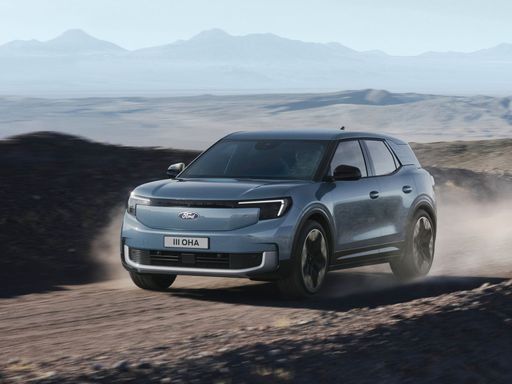 @ Ford Motor Company / Ford Media Center
@ Ford Motor Company / Ford Media Center
Ford Explorer EV
Ford Explorer EV
The Ford Explorer EV marks a significant step forward in the brand's journey towards electrification, offering an impressive blend of performance and sustainability. This modern SUV features a sleek design complemented by advanced technology that enhances the driving experience. With a focus on comfort and innovation, the Explorer EV aims to redefine family travel for the electric age.
details @ Ford Motor Company / Ford Media Center
@ Ford Motor Company / Ford Media Center
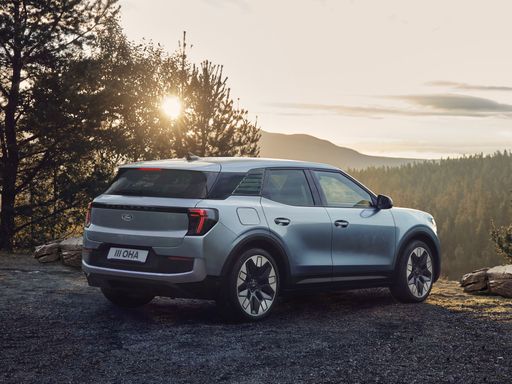 @ Ford Motor Company / Ford Media Center
@ Ford Motor Company / Ford Media Center
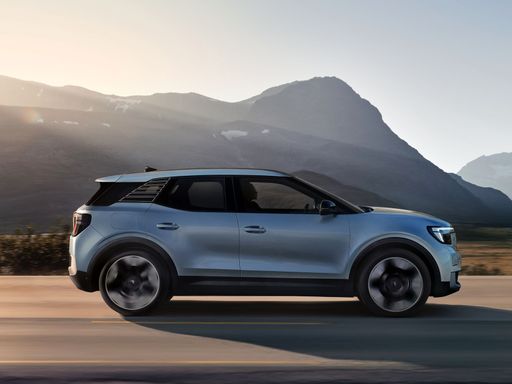 @ Ford Motor Company / Ford Media Center
@ Ford Motor Company / Ford Media Center
Renault Scénic
The Renault Scénic, with its distinctive design, captures attention through its sleek and modern aesthetic. Its interior is thoughtfully crafted, offering ample space and comfort for family travel or long journeys. The Scénic stands out with a strong emphasis on practicality, making it an ideal choice for those seeking both style and functionality in a vehicle.
details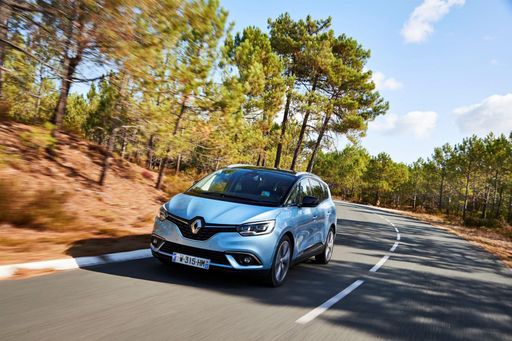 @ Renault Group Media
@ Renault Group Media
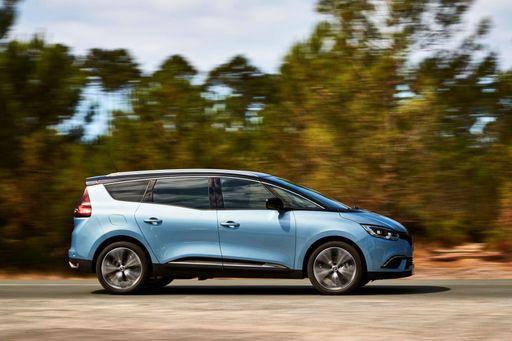 @ Renault Group Media
@ Renault Group Media
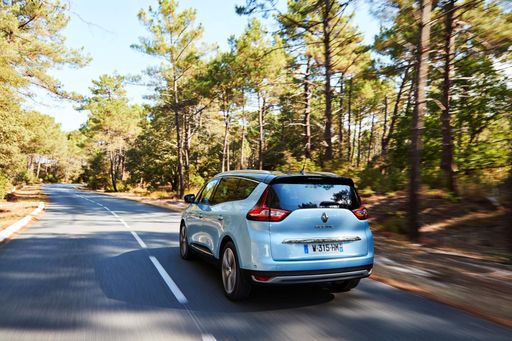 @ Renault Group Media
@ Renault Group Media
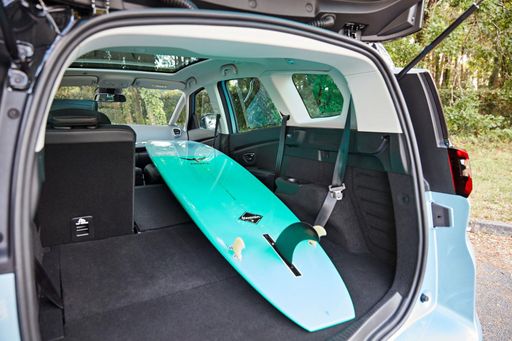 @ Renault Group Media
@ Renault Group Media
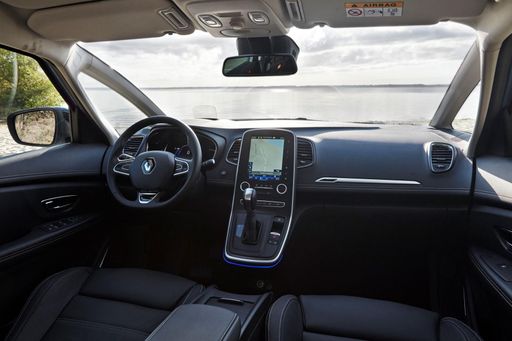 @ Renault Group Media
@ Renault Group Media
 @ Ford Motor Company / Ford Media Center
@ Ford Motor Company / Ford Media Center
|
 @ Renault Group Media
@ Renault Group Media
|
|
|
|
Costs and Consumption |
|
|---|---|
|
Price
34200 - 48800 £
|
Price
34600 - 44000 £
|
|
Consumption L/100km
-
|
Consumption L/100km
-
|
|
Consumption kWh/100km
14.5 - 17.2 kWh
|
Consumption kWh/100km
16.6 - 17.5 kWh
|
|
Electric Range
360 - 602 km
|
Electric Range
420 - 598 km
|
|
Battery Capacity
52 - 79 kWh
|
Battery Capacity
-
|
|
co2
0 g/km
|
co2
0 g/km
|
|
Fuel tank capacity
-
|
Fuel tank capacity
-
|
Dimensions and Body |
|
|---|---|
|
Body Type
SUV
|
Body Type
SUV
|
|
Seats
5
|
Seats
5
|
|
Doors
5
|
Doors
5
|
|
Curb weight
1908 - 2179 kg
|
Curb weight
1822 - 1927 kg
|
|
Trunk capacity
445 - 450 L
|
Trunk capacity
545 L
|
|
Length
4468 mm
|
Length
4470 mm
|
|
Width
1871 mm
|
Width
1864 mm
|
|
Height
1630 - 1639 mm
|
Height
1571 mm
|
|
Max trunk capacity
1417 - 1422 L
|
Max trunk capacity
1670 L
|
|
Payload
561 - 585 kg
|
Payload
514 - 518 kg
|
Engine and Performance |
|
|---|---|
|
Engine Type
Electric
|
Engine Type
Electric
|
|
Transmission
Automatic
|
Transmission
Automatic
|
|
Transmission Detail
Reduction Gearbox
|
Transmission Detail
Reduction Gearbox
|
|
Drive Type
Rear-Wheel Drive, All-Wheel Drive
|
Drive Type
Front-Wheel Drive
|
|
Power HP
170 - 340 HP
|
Power HP
170 - 218 HP
|
|
Acceleration 0-100km/h
5.3 - 8.7 s
|
Acceleration 0-100km/h
7.9 - 8.6 s
|
|
Max Speed
160 - 180 km/h
|
Max Speed
150 - 170 km/h
|
|
Torque
310 - 679 Nm
|
Torque
280 - 300 Nm
|
|
Number of Cylinders
-
|
Number of Cylinders
-
|
|
Power kW
125 - 250 kW
|
Power kW
125 - 160 kW
|
|
Engine capacity
-
|
Engine capacity
-
|
General |
|
|---|---|
|
Model Year
2024 - 2025
|
Model Year
2025
|
|
CO2 Efficiency Class
A
|
CO2 Efficiency Class
A
|
|
Brand
Ford
|
Brand
Renault
|
What drive types are available for the Ford Explorer EV?
The Ford Explorer EV is available as Rear-Wheel Drive or All-Wheel Drive.
The prices and data displayed are estimates based on German list prices and may vary by country. This information is not legally binding.
